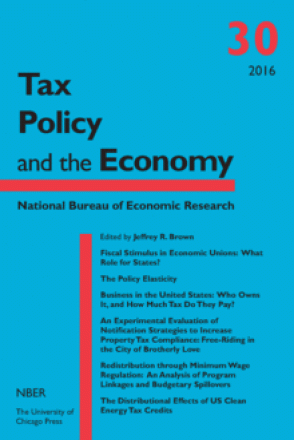Business in the United States: Who Owns It, and How Much Tax Do They Pay?

You may be able to download this chapter for free via the Document Object Identifier.
"Pass-through" businesses like partnerships and S-corporations now generate over half of US business income and account for much of the post-1980 rise in the top 1 percent income share. We use administrative tax data from 2011 to identify pass-through business owners and estimate how much tax they pay. We present three findings. (1) Relative to traditional business income, pass-through business income is substantially more concentrated among high-earners. (2) Partnership ownership is opaque: 20 percent of the income goes to unclassifiable partners, and 15 percent of the income is earned in circularly owned partnerships. (3) The average federal income tax rate on U.S. pass-through business income is 19 percent—much lower than the average rate on traditional corporations. If pass-through activity had remained at 1980s low level, strong but straightforward assumptions imply that the 2011 average US tax rate on total US business income would have been 28 percent rather than 24 percent, and tax revenue would have been approximately $100 billion higher.
-
Copy CitationMichael Cooper, John McClelland, James Pearce, Richard Prisinzano, Joseph Sullivan, Danny Yagan, Owen Zidar, and Eric Zwick, Tax Policy and the Economy, Volume 30 (University of Chicago Press, 2014), chap. 3, https://www.nber.org/books-and-chapters/tax-policy-and-economy-volume-30/business-united-states-who-owns-it-and-how-much-tax-do-they-pay.Download Citation


